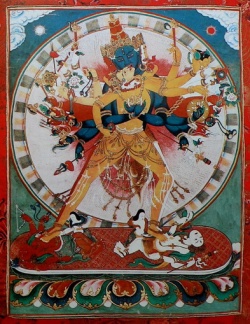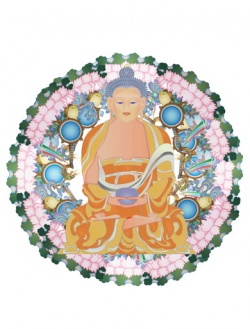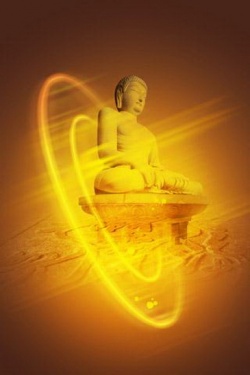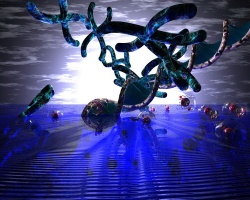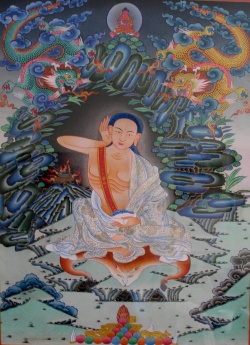Conditioned and Unconditioned Dharmas
The substrate, which is behind the empirical personality and its experiences, is consisting of an endless number of separate elements or dharma-carriers.
But all of them could be reduced to a much smaller number of types. Altogether there are 75 types of different dharmas, according to the oldest school of Buddhist philosophy.
Buddhist scholars have had elaborated several different classifications of dharma-elements. The most important of them are dharma classifications to:
A. Samskrta or Asamskrta
Samskrta (“Conditioned”, “subordinated to existence”)
Asamskrta (“Unconditioned”, “unsubordinated to existence”)
B. Sasrava or Anasrava
Sasrava (“Contaminated”, “connected with anxiety”, “because the defilements adhere to them”)
Anasrava (“Uncontaminated”, “not connected with anxiety”)
C. How beneficial they are:
Beneficial (kusala)
Unhealthy (akusala)
Neutral (avyakrta)
The classifications above are tightly related to the theory of salvation. Between the most important classifications of dharmas based on psychology are divisions to:
Skandha (Aggregates)
Āyatana (Bases)
Dhātu (Elements)
The classification of dharmas into “conditioned” (samskrta) and “unconditioned” (asamskrta) is directly connected with the theory of momentary existence.
“The subordinated to existence” dharmas are named those, which are combining with 4 features that condition them as “Conditioned”:
Origination
Being
Changing
Disappearing
The uninterrupted process of dharma origination and disappearing, happening every moment, manifests the anxiety of dharmas.
It is without a beginning and its result is an empirical existence of personality.
The term of dharma itself doesn’t contain yet the features “origination” and “disappearing”, the process or an act of arising and disappearing is abstracted from the dharmas performing this act.
The abstracted elements of the process itself are also dharmas that are subordinated to the origination and disappearing. In this way we can speak about the “origination of the
In this way we are able now to replace the statement “samskrta dharmas” with “dharmas that are bonded with 4 processes” or “dharmas subordinated to origination and disappearance” or “dharmas, subordinated to existence”. Since the momentary origination and disappearance of dharmas is nothing else, but the empirical existence that constitutes a chain of momentary combinations, which is creating a conscious personality.
“Abhidharmakosa” regarding this group of dharmas states:
“Casually conditioned dharmas except the Truth of the Path (marga-satya) are with the inflow of affects.”
And even if the affective states may arise in association with the truths of “Cessation” and “Path” as objects of clinging, it is said, that affects doesn’t attach to them. That’s why it is considered they are “without inflow of affects”.
In opposition to the Conditioned dharmas, there are 3 types of dharmas that are not originating and disappearing or which are without inflow of affects.
Without inflow of affects is the Truth of the Path, or dharma in sense of religion, but also akasha (space, ether, empty space) or complete absence of anything or absence of obstacles to manifestations of sensible elements, and 2 kinds of “cessations of dharma flow”.
Cessation through knowledge (pratisamkhya-nirodha) – it means by learning, analysing, intellectual contemplation or deliberation.
Cessation without knowledge (apratisamkhya-nirodha) – the opposite, here it means by means of deep one-pointed concentration and meditation, which brings the states of mind that are behind the intellectualizing or thinking.
In English we could also attribute one type to the cleverness and other to the wisdom, in sense of intuitive or eternal knowledge.
They are also called 2 types of knowledge, one is indirect knowledge, what we learn through intellectualizing, contemplation or books or terms, the other is direct knowledge, without the medium of terminology or words, when we turn to things themselves as they are.
The Conditioned (Samskrta) dharmas as they are subordinated to the process of being and connected with anxiety are called anitya (impermanent, transient, relative, literary “not eternal”).
Instead the dharmas without inflow of affects are called nitya (literary “eternal “or permanent).
Accordingly to the Buddhist view all dharmas as transcendental phenomena are eternal, without beginning or end in time. Similarly their anxiety is without a beginning.
We can put an end to the anxiety of dharmas, when we reach the Nirvana, but we can’t stop dharmas themselves from manifesting.
Vasubandhu says, it is impossible to liberate yourself from all affects at once, we should liberate ourselves from each dharma separately.
Vasubandhu when explaining the cessation without knowledge tells it works as a complete barrier to the process of creation of dharmas. It is reached not by learning the Buddha teaching, but due to incompleteness of conditions.
For example, when organ of sight and the mind are concentrated to a single object, objects of all other senses as smell, taste, touch, sound, colours and forms are transitioning into past and cannot be an object of a consciousness anymore, because consciousness doesn’t perceive objects of the past.
There could be 4 groups of dharmas depending on methods of possible cessation of them:
Dharmas, the flow of which can be ceased by knowledge only (for example, causally conditioned dharmas with inflow of affects, which will to arise again).
Without a knowledge (unconditioned dharmas that are not subordinated to inflow of affects).
In both ways (dharmas with an inflow of affects, which will not arise again).
In none of both. (Dharmas of past, present and future without an inflow of affects).
When the origination and disappearing of dharmas is over, we have reached Nirvana, the eternal peace.
